15W - 22W


Layers of Fear was provided by Bloober Team for review. Thank you!
All stories must come to an end, even the ones you never wanted to experience. Layers of Fear is a psychological horror game where sanity is a fickle thing. In 2 different stories, with one told from 3 different perspectives, you will walk through and experience the turmoil the characters are going through. One tells the story of a painter and his family, the other an actor on an ocean liner, but all is not what it seems. But how do these two stories connect? Well, we will just have to find out.
Layers of Fear is a remake of the two Layers of Fear games and its DLC. Rebuilt from the ground-up in Unreal Engine 5, and taking advantage of the new Lumen system for lighting, new mechanics have been added to not only enhance the experience, but weave in the chapters and stories together. On top of the two games and DLC, there is a new story added specifically to connect everything together.
I remember when the first Layers of Fear came out in 2016 and I was blown away by the visual storytelling, so seeing it remade like this with the promise of the connected story between both games and updated visuals sounds like a dream come true. In many ways, this game succeeds! Visually, UE5's capabilities are starting to show their stuff. The game is stunning and really shines across each chapter. I personally liked the original's story, but the second game shows a lot more variety and sound design is wonderful.
The original story can feel lacking at times and not feel as important, while sometimes the voice over for notes and such can start in the middle of the paragraph instead of the beginning, but the overall experience is one I was so happy to play and get back into. I also liked how the stories all connected, even with the voice acting being iffy at times. If you're an atmospheric/psychological horror fan, this is a game you will want to get. And if you want to experience this on the Steam Deck, you will find no trouble doing it!
I will admit, I was a little fearful of how a UE5 game would run on the Steam Deck, considering it is a brand new engine that has new systems that can be pretty taxing on the device. I am happy to say this wasn't an issue and Layers of Fear runs fantastic right out of the box! Defaulting to low settings with TSR on Balanced, the game can run at 40 FPS with a TDP limit of 8. 40 not only feels extremely smooth, but allows the game to stay around 11W - 14W drain. But, while this works extremely well, and makes the game a Best on Deck one, we can push further.
First, some comparisons. I tended to not notice huge differences between the low, medium, and high settings of the game. There were some slight boosts from low to medium, but from medium to high, there wasn't a lot of discernible differences on the Deck's screen.
Then we have the upscaling. When I started testing the game, the only options in there were TSR, DLSS, and XeSS, but an update early today on release added in FSR 2. After testing all of them, I would say TSR not only had similar quality compared, but also saved significantly more battery.
With this in mind, keeping TSR at balanced, and increasing everything except shadows to medium, we can increase the TDP limit to 9 and keep a solid 40 FPS limit with almost no drops at all. There are some areas that will push drain to 16W, but these are few while the majority will hang around 13W - 14W. I felt this was my preferred way to play, keeping a slightly smoother experience and some settings up to medium for only 1 extra limit increase was a no brainer and my recommended way to play.
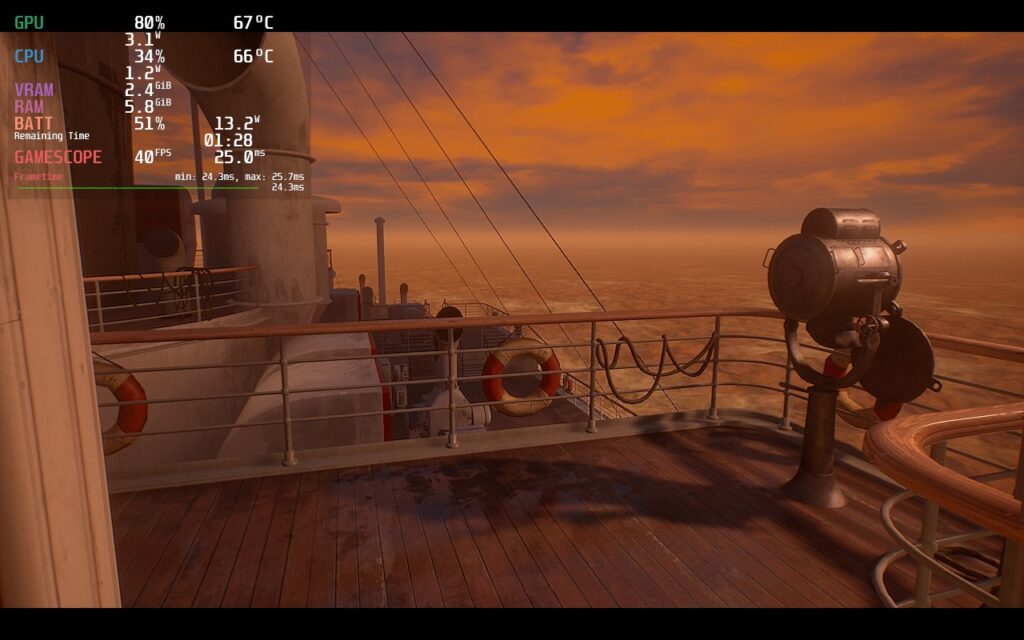
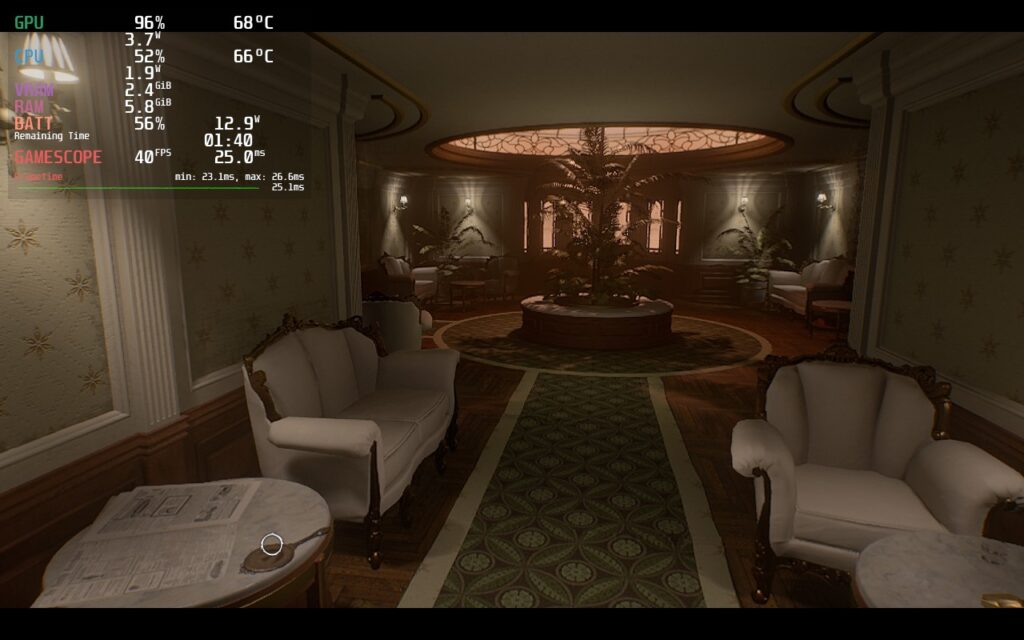
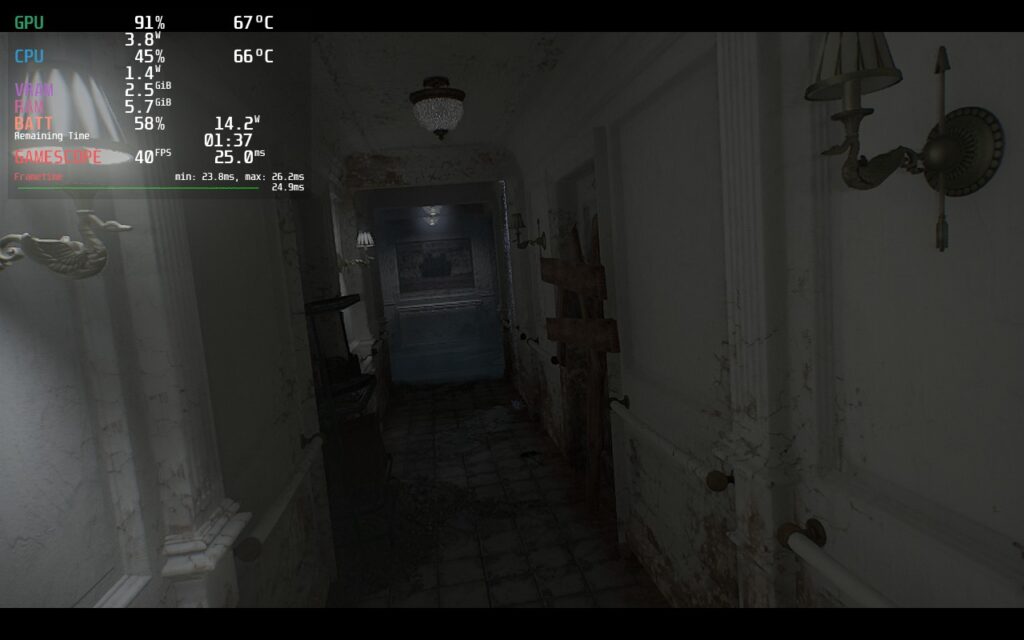
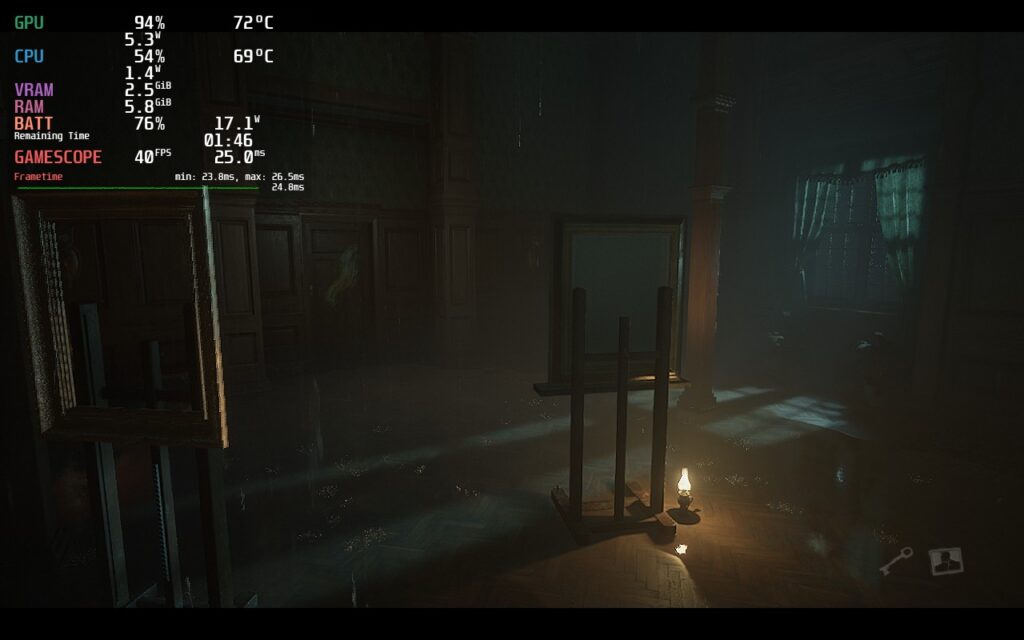

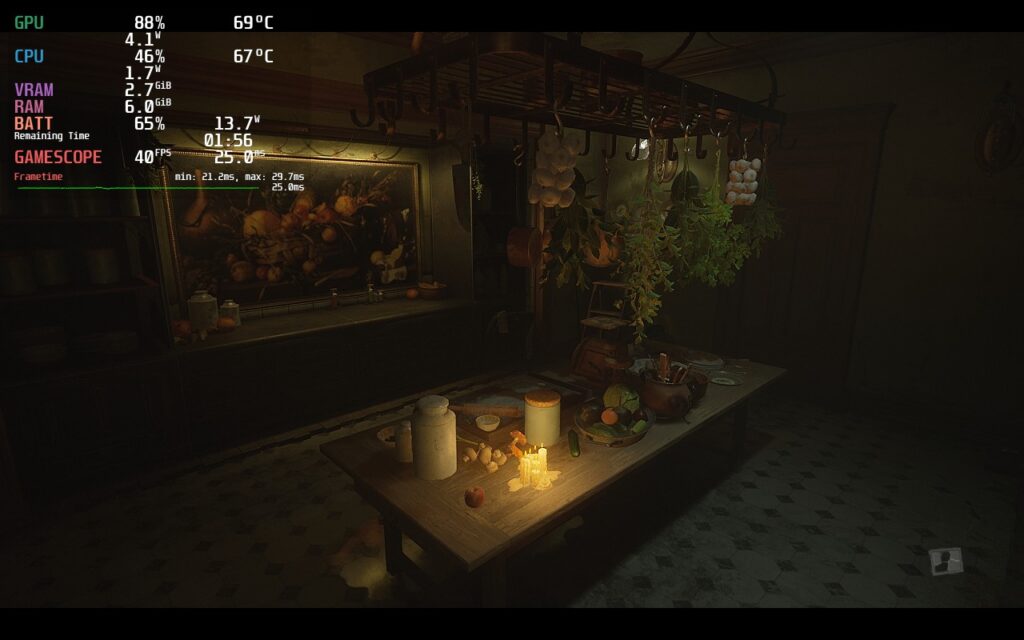
Next, I went for the max quality possible. I put everything on the highest setting and, with upscaling turned off, it wasn't able to hit 30 FPS at all. Luckily, upscaling doesn't hurt it so much so, keeping all settings on high and TSR to balanced, 30 FPS was possible and still felt okay. The drain could range from 15W - 22W at times, but overall, it did work well!



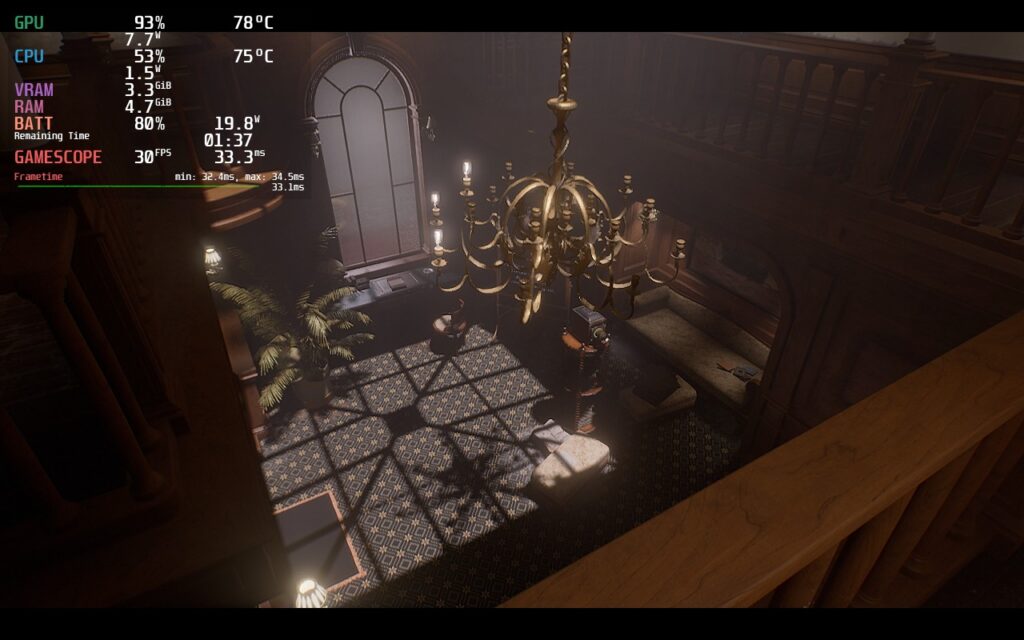

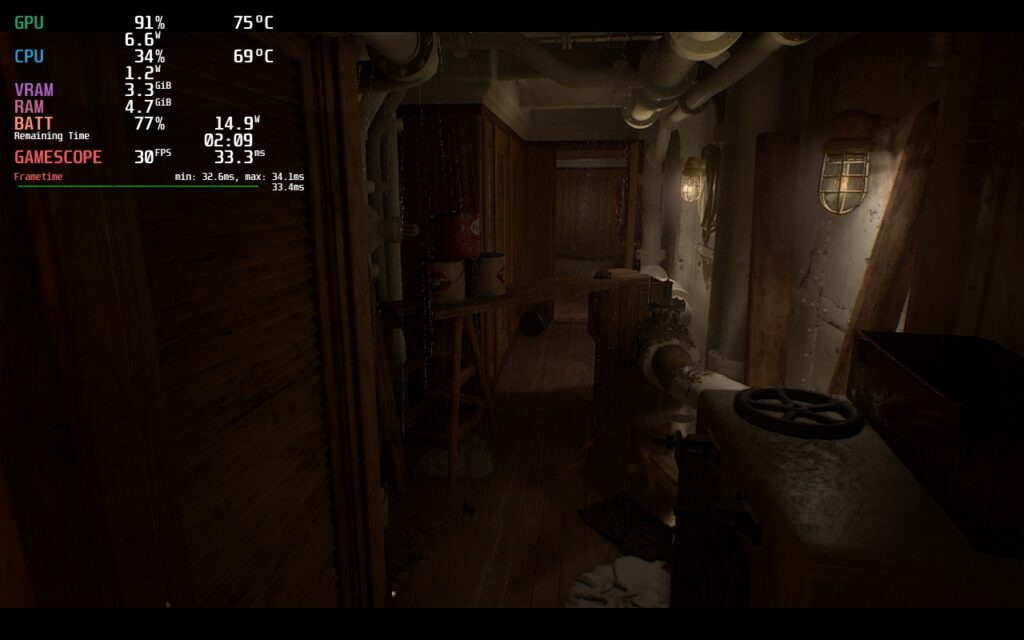
Finally, we have the framerate build. With all settings set to low and TSR still at balanced, Layers of Fear was able to run at 60 FPS. The drain ranged similarly to the quality build, maybe 1W - 2W less, but it was still manageable.
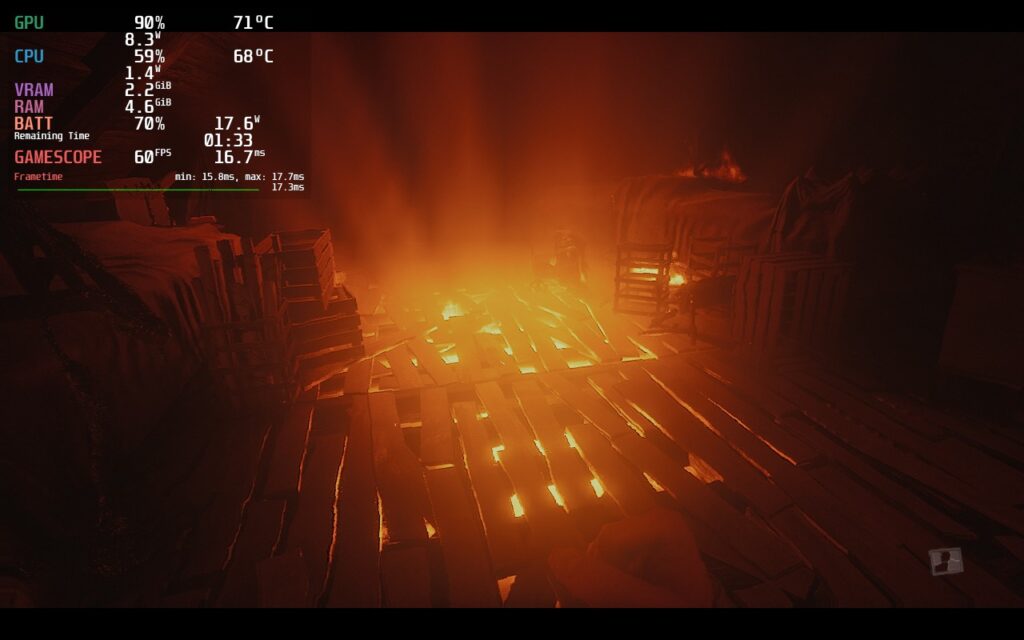
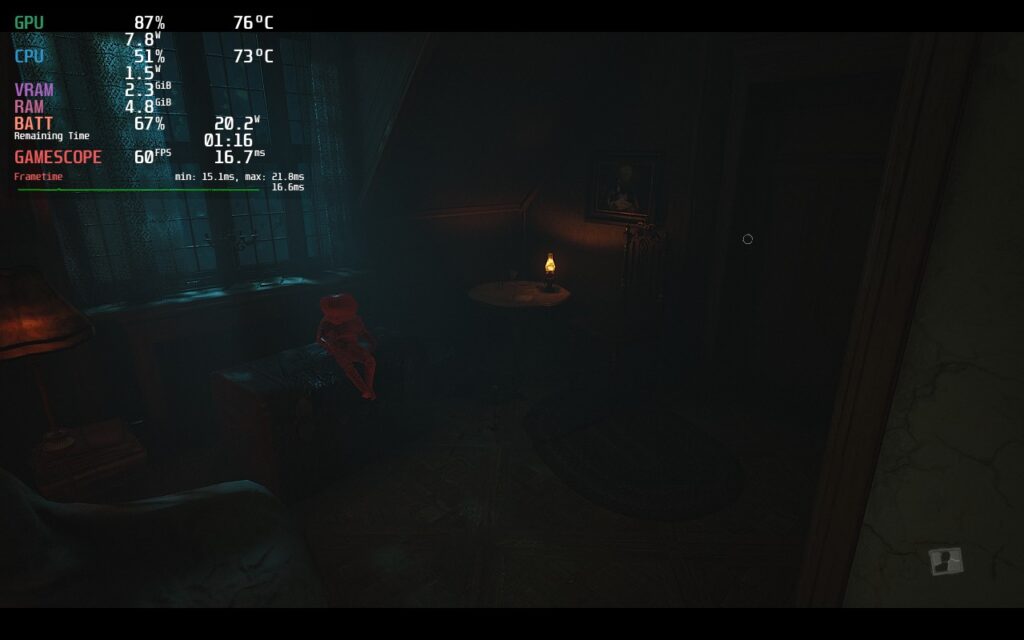
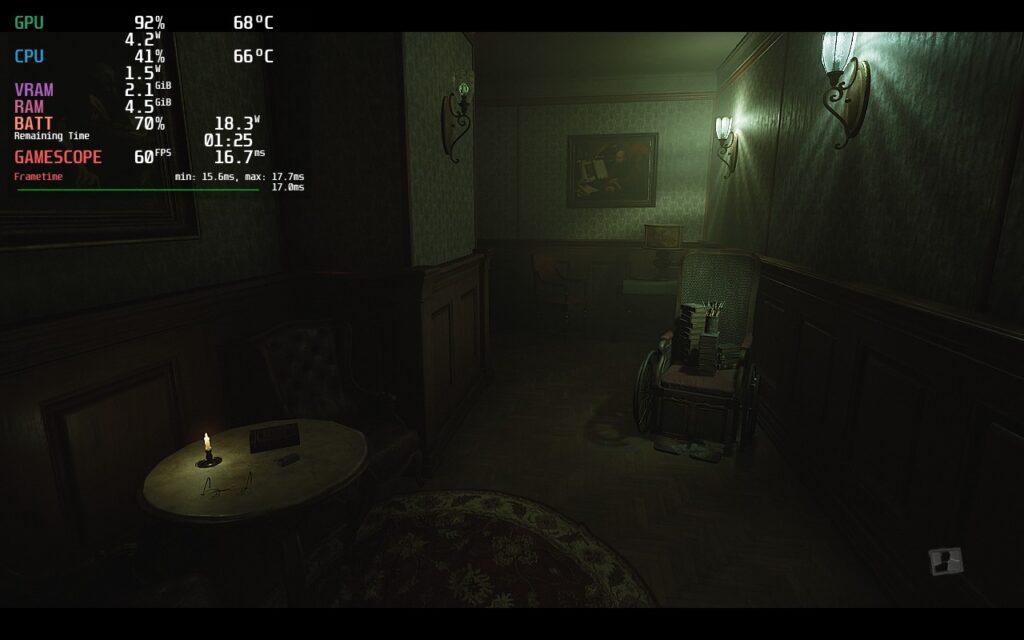
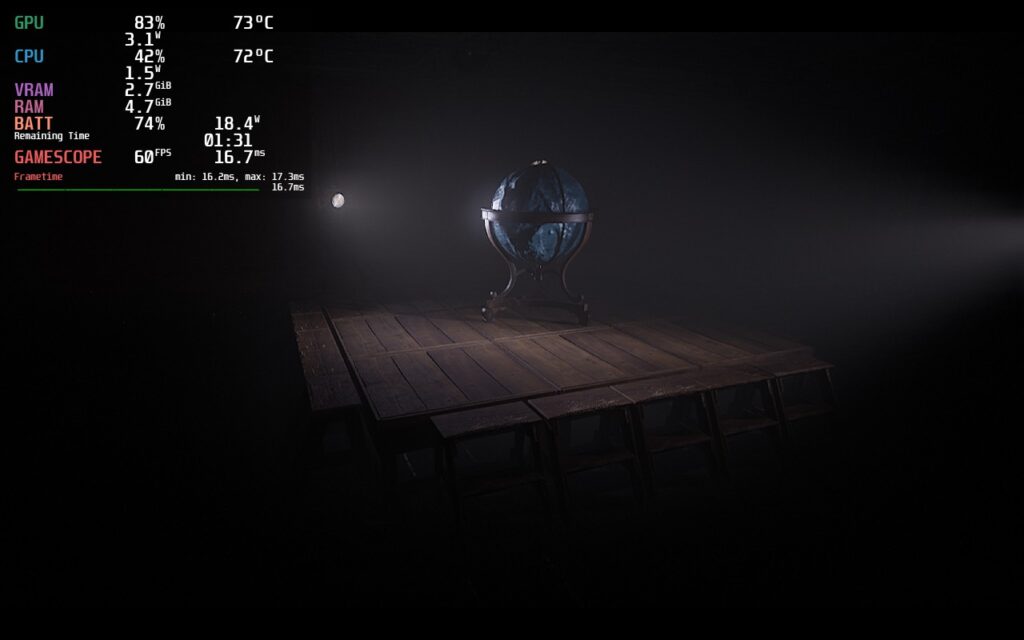
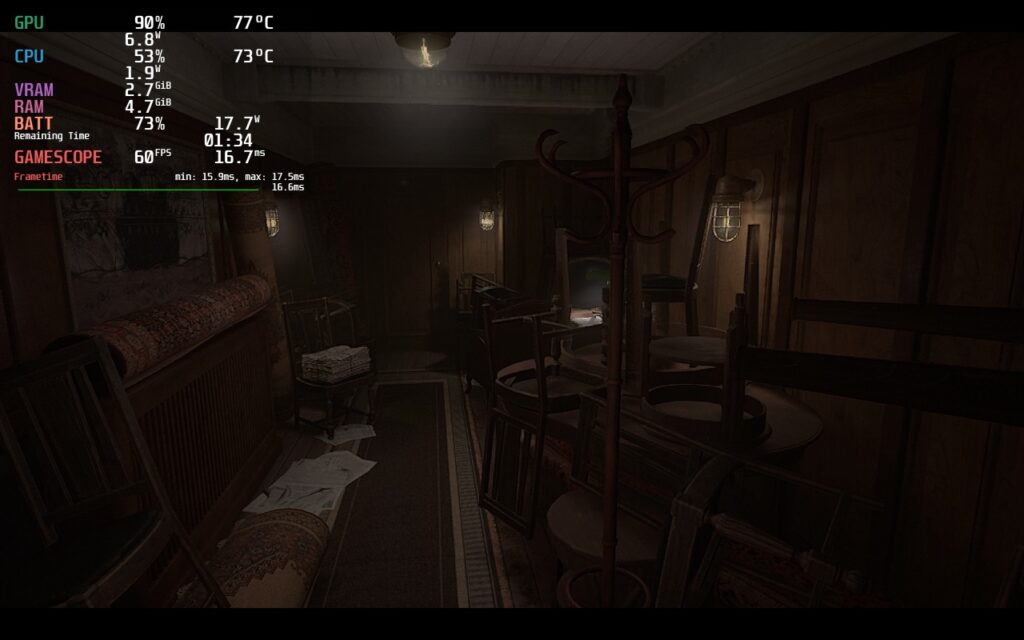
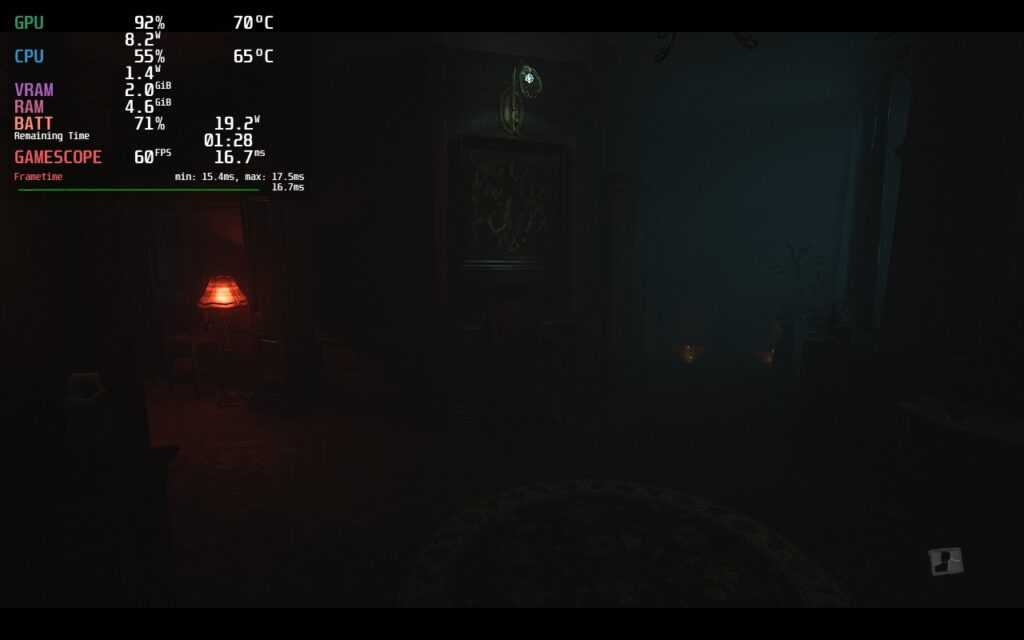
Layers of Fear does support 16:10 resolutions, but there will be black bars in-game regardless. The main menu does cover the entire screen without any bars, but this changes as soon as you get in-game. There is full controller support and cloud saves though!
Now that we have a ROG Ally, I also decided to check out the game there. After some troubleshooting, and a hard reboot of the device, I was able to start getting some statistics! This game mixed with the Ally's screen is GORGEOUS, but my controller swapped to KB+M randomly a couple times, so testing took a bit longer. I am still setting up my overlay correctly, so I don't have screenshots just yet, but here is what I have found so far:
In Turbo mode, I was able to get the game running at around 30 FPS at 1080p with our quality build, though the drain was around 42W, so battery was essentially gone. Changing the resolution to 720p and using AMD RSR/FSR to upscale to 1080p, I was able to push to 60 FPS with around the same battery drain, which ate up about 10% in around 10 minutes.
In Performance mode, at 1080p, our recommended build was able to get around 45 FPS with a 27W - 29W drain, while 720p at the same settings got me to a stable 60 with a 24W - 25W drain. I could have also turned upscaling completely off, or went to high settings with upscaling on, and gotten a stable 45 FPS.
In Silent mode, 1080p isn't viable, but using 720p with AMD RSR/FSR, mixed with our recommended settings, and you will get a solid 30 FPS at around 15W drain. This puts it around on-par with our recommended build for the Deck at 40 FPS with similar battery drain.
Personally, the compromises for the Deck and the battery saving made it an overall better experience there, but that screen the Ally has makes the game's visuals really pop. Thankfully, the Deck is able to hit 60 FPS on lower settings though and, since the game still looks phenomenal even at these, so I didn't feel I was missing much.
Layers of Fear is a fantastic remake that keeps what made the originals so great and enhances in multiple different ways. While the voice acting could be better, the upgraded visuals with UE5 is incredible and the sound design is spot on. It is more of a walking simulator with some simple puzzles, but the atmosphere of a deteriorating mind is captivating. And whether you are playing this on the Steam Deck or Ally, this will be a great experience.
Our review is based on the PC version of this game.
If you enjoyed this review, be sure to check out the rest of the content on SteamDeckHQ! We have a wide variety game reviews and news that are sure to help your gaming experience. Whether you're looking for news, tips and tutorials, game settings and reviews, or just want to stay up-to-date on the latest trends, we've got your back.
Layers of Fear is a fantastic remake for a hauntingly atmospheric game that will run on the Steam Deck and Ally with little issue!

No Forced Compatibility
TSR: Balanced
View Distance: Medium
Anti-aliasing: Medium
Textures: Medium
Shadows: Low
Global Illumination: Medium
Reflections: Medium
Effects: Medium
Post Processing: Medium
Foliage: Medium
Shading: Medium
Limit
30
Refresh Rate
60
HRS
NO
TDP Limit
12
Scaling Filter
Linear
GPU Clock
Disabled
No Forced Compatibility
TSR: Balanced
View Distance: High
Anti-aliasing: High
Textures: High
Shadows: High
Global Illumination: High
Reflections: High
Effects: High
Post Processing: High
Foliage: High
Shading: High
15W - 22W
70c - 80c
1.5 - 2 hours
Limit
60
Refresh Rate
60
HRS
NO
TDP Limit
12
Scaling Filter
Linear
GPU Clock
Disabled
No Forced Compatibility
TSR: Balanced
View Distance: Low
Anti-aliasing: Low
Textures: Low
Shadows: Low
Global Illumination: Low
Reflections: Low
Effects: Low
Post Processing: Low
Foliage: Low
Shading: Low
14W - 21W
70c - 80c
1.5 - 2 hours